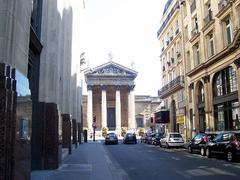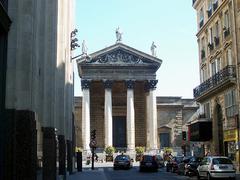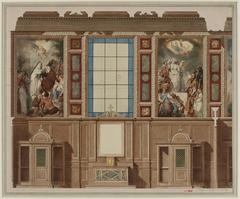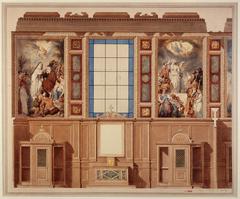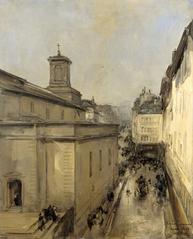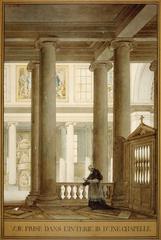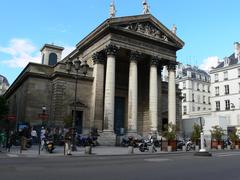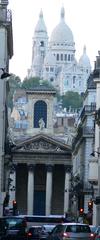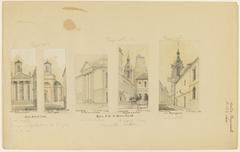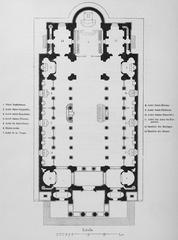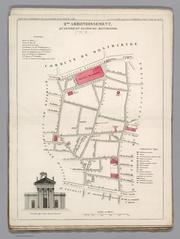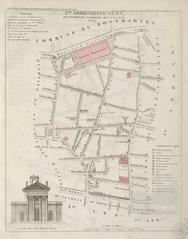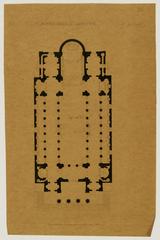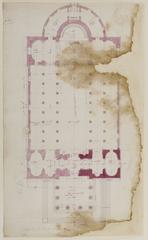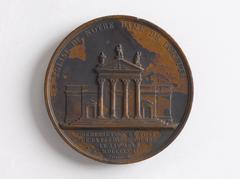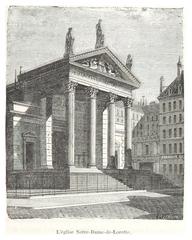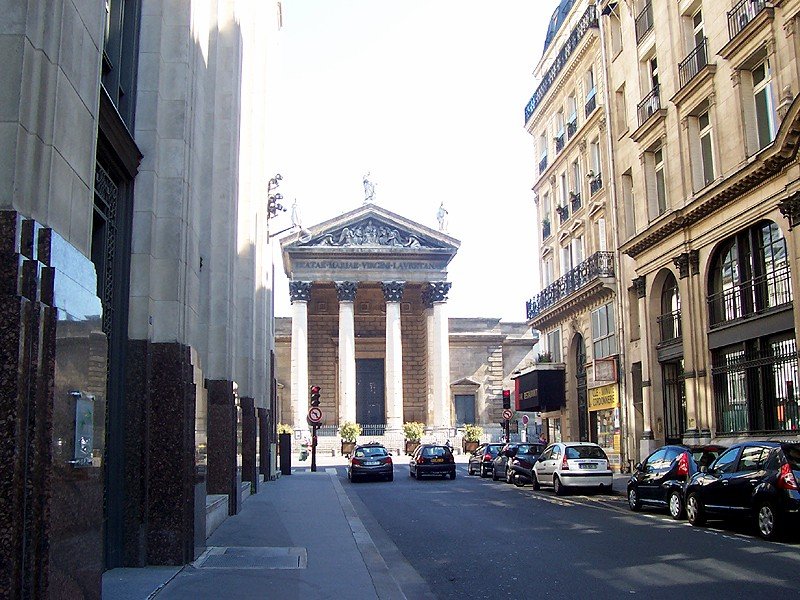
Notre-Dame-de-Lorette Paris: Visiting Hours, Tickets, and Visitor Guide
Date: 14/06/2025
Introduction
Located in the lively 9th arrondissement, Notre-Dame-de-Lorette stands as a striking example of 19th-century neoclassical architecture and a testament to Paris’s rich cultural and religious heritage. Built between 1823 and 1836 by architect Louis-Hippolyte Lebas, this church mirrors the urban transformation of post-Revolutionary Paris and offers a window into the city’s artistic and social fabric. Its stately Roman-inspired façade contrasts with an ornately decorated interior brimming with frescoes, marble, and gilded details—a fusion of Italian Renaissance and French religious artistry. Notre-Dame-de-Lorette is not only an architectural treasure but also a site of cultural resonance, connected to historical figures such as Claude Monet and Georges Bizet, and intimately linked to the vibrant Nouvelle Athènes neighborhood.
Today, Notre-Dame-de-Lorette welcomes visitors daily with free admission. Its central location, close to major Parisian landmarks and easily accessible via the Notre-Dame-de-Lorette metro station, makes it an ideal stop for anyone interested in the city’s history, art, or architecture. This comprehensive guide provides essential information on visiting hours, tickets, accessibility, highlights, and helpful travel tips to ensure a rewarding experience at this Parisian gem (Atlas Obscura, Wikipedia, Sortir à Paris).
Historical Overview
Origins and Context
Notre-Dame-de-Lorette arose during a period of major expansion and renewal in Paris. The original chapel on this site was destroyed in 1796, and the growing population in the New Athens area prompted the city to commission a new church. Architect Louis-Hippolyte Lebas’s winning design reflected contemporary neoclassical tastes and the aspirations of the Restoration era (Atlas Obscura). Completed in 1836, the church quickly became a focal point for spiritual and community life in the district.
Cultural and Social Significance
The church is deeply interwoven with the social dynamics of 19th-century Paris. Its location—at the boundary of an affluent yet colorful neighborhood—resulted in its association with the so-called “lorettes,” women of the demi-monde whose presence contributed to the area’s lively reputation. Despite this, Notre-Dame-de-Lorette maintained its status as a parish church for generations. It is renowned as the baptismal site of Claude Monet and Georges Bizet, further cementing its place in the history of French art and music (Atlas Obscura, Wikipedia).
Recognized for its architectural and artistic value, Notre-Dame-de-Lorette was designated a protected historical monument in 1984 (Atlas Obscura).
Architectural and Artistic Highlights
Exterior
The neoclassical façade features four Corinthian columns supporting a pediment sculpted by Charles-François Lebœuf-Nanteuil, depicting angels in homage to the Virgin and Child. Statues above represent the theological virtues—Charity, Hope, and Faith. In 1902, the motto “Liberté, Égalité, Fraternité” was added above the entrance, symbolizing the church’s enduring connection to both religious and civic values (Wikipedia, Kevmrc).
Interior
The church’s interior is celebrated for its colorful polychrome frescoes, marble work, and gilding. The layout, reminiscent of ancient basilicas, features a long nave, side aisles, and a semi-circular apse. Four domed chapels at the corners honor the sacraments of Baptism, Confirmation, Eucharist, and Marriage, each with distinctive murals and iconography. The high altar, crafted of white marble and gold, serves as the visual and spiritual centerpiece.
A unique pictorial cycle inspired by apocryphal texts narrates the life of the Virgin Mary, reflecting the parish’s devotion and the broader Catholic tradition connected to the Marian shrine in Loreto, Italy (Parisian Fields, artculturefoi.paris).
The church is also distinguished by its 19th-century organ, which remains in use for services and concerts (Organs of Paris).
Visiting Information
Location and Access
- Address: 18 bis rue de Châteaudun, 75009 Paris
- Metro: Notre-Dame-de-Lorette (Line 12)
- Proximity: 8 minutes from Saint-Lazare, 12 from Opéra Garnier, 20 from Sacré-Cœur (Kevmrc)
Opening Hours
- Monday–Saturday: 8:30 AM – 7:00 PM
- Sunday: 9:00 AM – 7:00 PM
- Note: Hours may vary during services or events; check the official parish website or Paris city website for updates.
Admission and Tickets
- Entry: Free for all visitors
- Donations: Appreciated to support maintenance and restoration
Accessibility
- Wheelchair Access: Main entrance is accessible; some areas may have uneven flooring. Check specific needs with the parish or on the city accessibility guide.
Tours and Events
- Guided Tours: Occasionally offered, especially during events like the Journées Européennes des Métiers d’Art (Sortir à Paris)
- Photography: Permitted without flash; please respect the sanctity during services
What to See
- Baptism Chapel: Admire its dome and elaborate paintings
- Nave and Side Chapels: Marvel at 19th-century murals and marble decorations
- High Altar and Organ: Explore the artistic and musical heritage
- Façade: Best viewed from Rue Laffitte, offering a picturesque angle with Sacré-Cœur in the background
Travel Tips
- Visit early or late in the day for a tranquil atmosphere and optimal lighting for photography
- Pair your church visit with a stroll along rue des Martyrs, known for cafes, food shops, and bookstores
- Check for special events or concerts to enrich your experience
- Wear comfortable shoes to explore the surrounding Nouvelle Athènes district
Nearby Attractions
- Opéra Garnier: Iconic 19th-century opera house
- Musée de la Vie Romantique: Intimate museum dedicated to Romantic-era artists
- Musée Gustave Moreau: Former home and studio of the Symbolist painter
- Montmartre and Sacré-Cœur: The historic and artistic heart of Paris
Frequently Asked Questions (FAQs)
What are the visiting hours?
Open Monday–Saturday from 8:30 AM to 7:00 PM, Sunday from 9:00 AM to 7:00 PM.
Is there an entry fee?
No, entry is free; donations are welcome.
Are guided tours available?
Yes, especially during special events. Check the parish website for schedules.
Is the church accessible for visitors with reduced mobility?
Yes, with ramps at the main entrance; some areas may present challenges.
Is photography permitted?
Yes, without flash and outside of religious services.
Preservation and Community Life
Notre-Dame-de-Lorette remains an active parish hosting regular Masses, weddings, baptisms, and concerts. Ongoing restoration efforts, supported by local and international organizations, focus on preserving the church’s unique murals and interiors. Community events and artistic demonstrations, such as those held during the European Artistic Crafts Days, highlight both the church’s living heritage and the dedication to its upkeep (Sortir à Paris).
Summary and Recommendations
Notre-Dame-de-Lorette encapsulates the intersection of Parisian history, neoclassical architecture, and cultural vibrancy. Its grand façade, lavish interior, and storied past—linked to artistic and social luminaries—make it much more than a place of worship. Free admission, generous visiting hours, and accessibility features ensure that all visitors can enjoy this extraordinary monument. Enhance your Paris itinerary by including Notre-Dame-de-Lorette and nearby attractions for a deeper appreciation of the city’s heritage. For up-to-date event and visitor information, refer to the official parish website or download the Audiala app for curated guides and audio tours.
Sources and Further Reading
- Atlas Obscura: Notre-Dame-de-Lorette
- Paris Promeneurs: Notre-Dame-de-Lorette
- Wikipedia: Notre-Dame-de-Lorette, Paris
- Sortir à Paris: Notre-Dame-de-Lorette Events
- ArtCultureFoi: Discover Notre-Dame-de-Lorette
- Paris City Official Website
- Parisian Fields: Notre-Dame-de-Lorette
- Kevmrc: Notre-Dame-de-Lorette Guide
- Organs of Paris: Notre-Dame-de-Lorette Organ
For more information and curated Paris travel guides, download the Audiala app and follow us on social media for inspiration and updates on Parisian landmarks.
